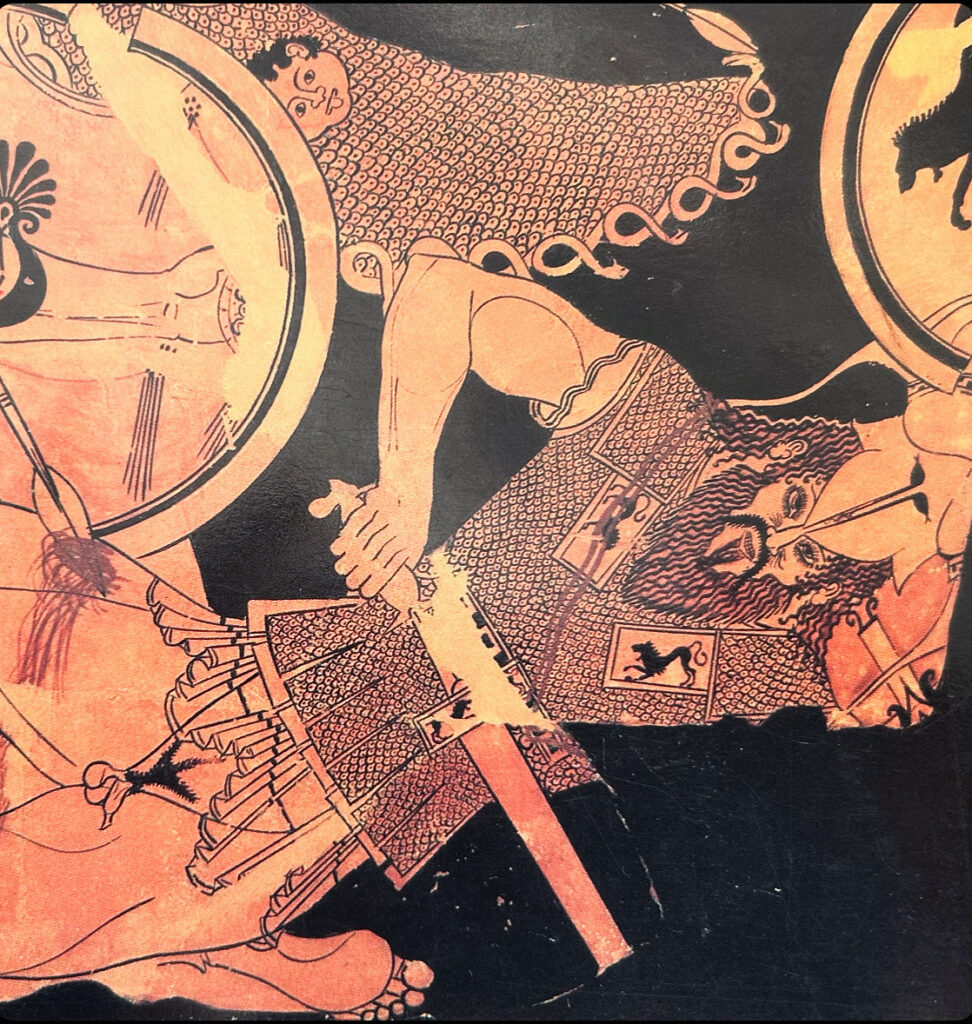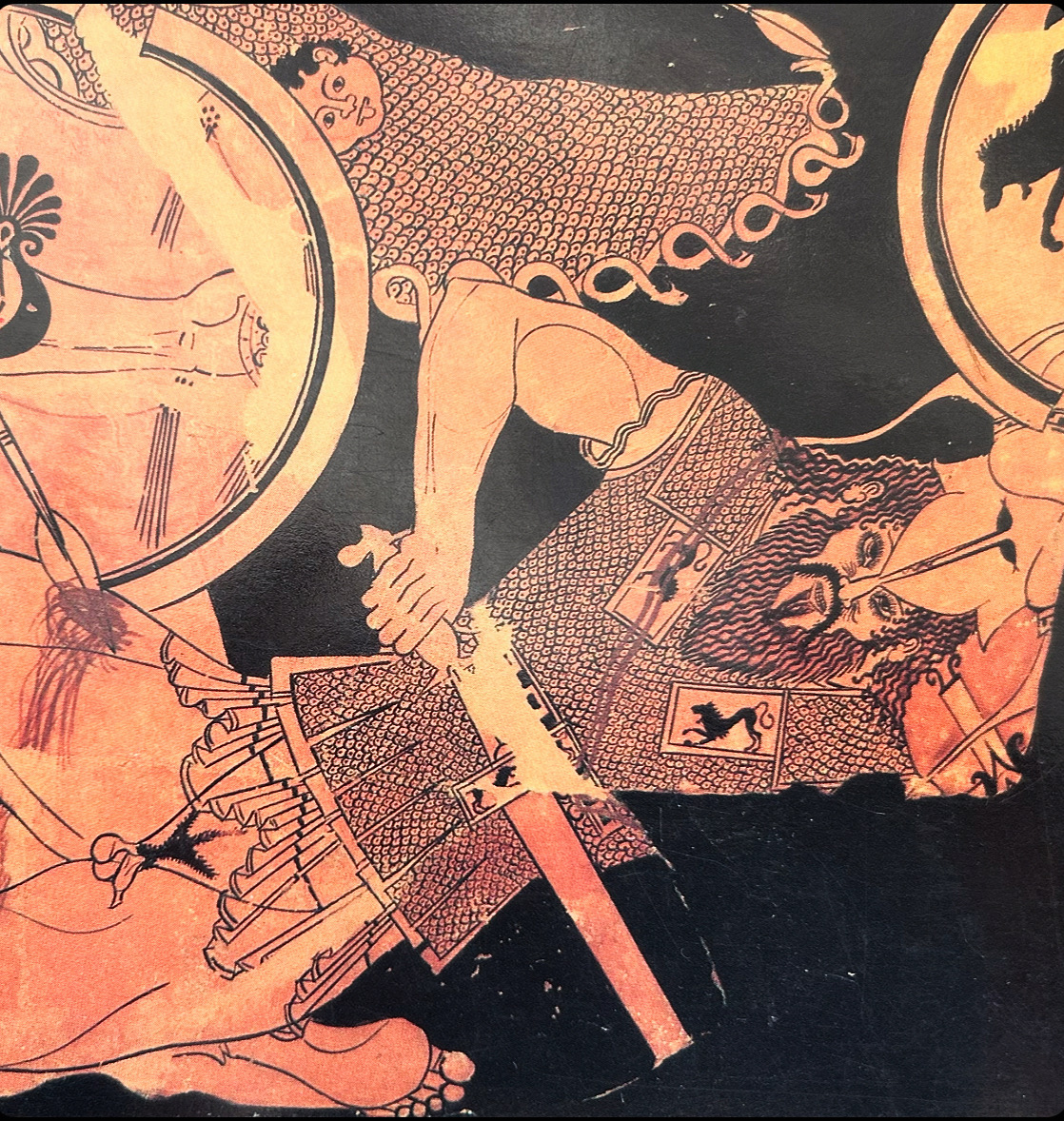This is perhaps my favourite vase (largely fragmentary, only about 20% of the big krater remains) and unfortunately one I’ve never seen in person. Euphronios’ special way of rendering the body and lining up a successful composition is clear, even in this extreme close up of the ne’er-do-well Kyknos as he lies dying on the battlefield.
A rogue prince and son of Ares, who generally made a nuisance of himself in Thessaly, Kyknos delighted in accosting travellers and despoiling a local sanctuary to Apollo. That is until Herakles passed through. The two would eventually duel, each helped by their patron deities: Athena looking out for Herakles and Ares bolstering his son (these supporters also face off on the vase, but I’ve ruthlessly cropped them…). Here, Herakles has just plunged his spear into Kyknos’ thigh and the warrior has collapsed, barely propping up his failing body with his unsheathed sword and shield arm.

Most incredible to me (the rare frontality makes it possible for Euphronios to really show off his stuff) is the face, scrunched into a grimace of pain and defeat above that prodigious beard. Both eyes are shown – abundantly lashed and somewhat stupefied – rolling back in his head. You can practically see the light leave them…
And has a bared sole ever evoked so much pathos?
[To say the vase has a turbulent modern history is putting it mildly. This image is a scan (can’t do justice to a proper museum photo or the real thing!) from the 1983 catalogue of the Nelson Baker Hunt collection, back when private collections of antiquities were published with scientific texts and glossies. After that collection was sold off at auction, and acquired by Shelby White and Leon Levy (and was published again in 1990 as part of their NY collection). It has since been returned to Italy – presumably to Cerveteri? Has anyone seen it recently?]




